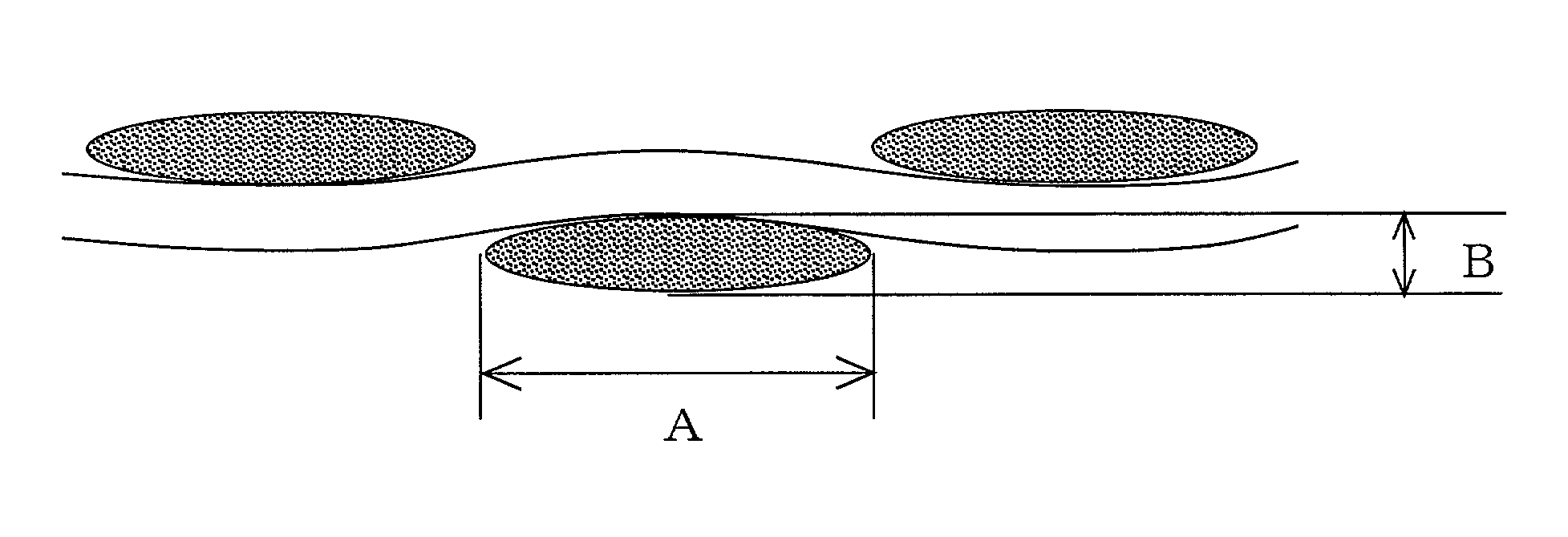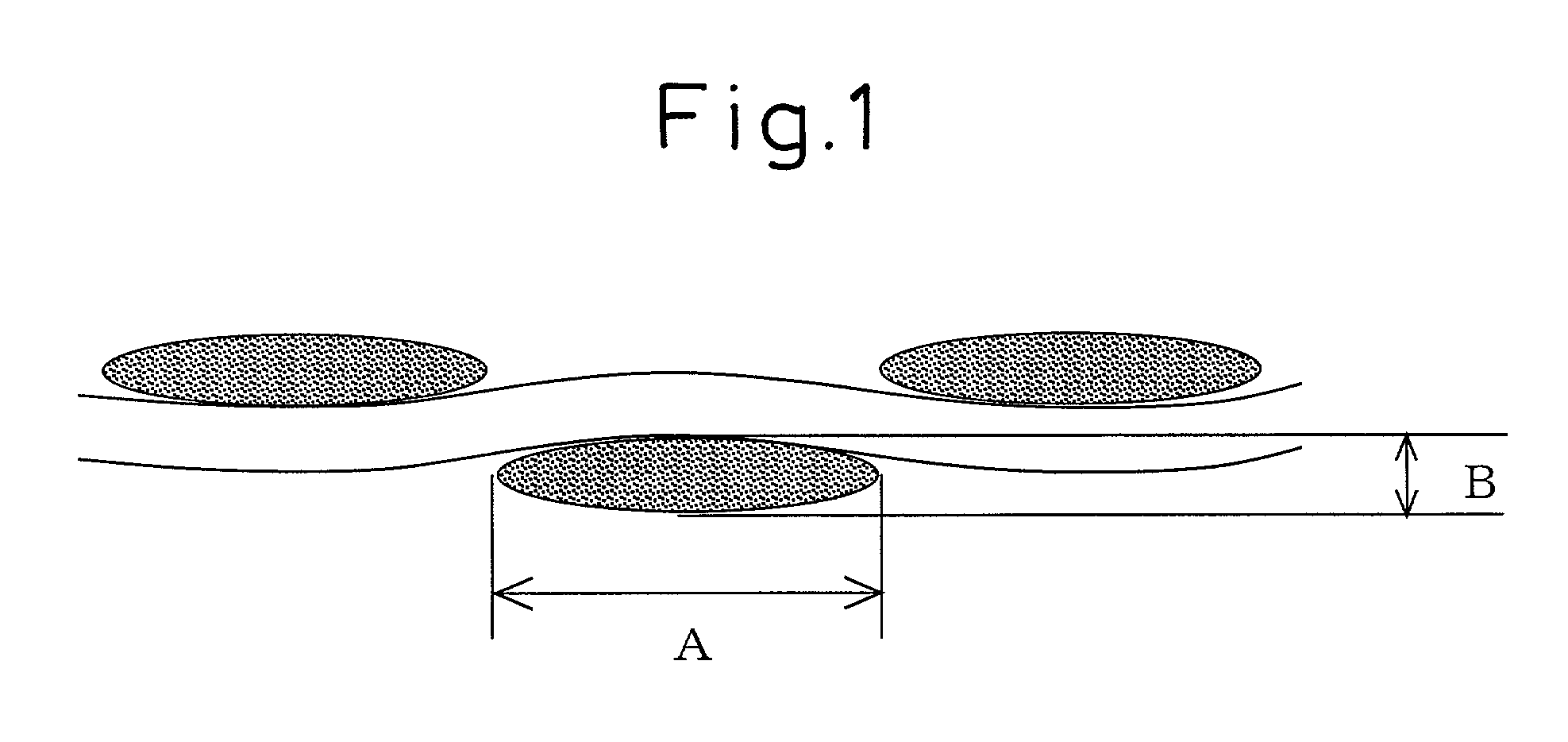Glass cloth and printed wiring board
a technology of glass cloth and printed wiring, which is applied in the direction of printed circuit aspects, weaving, other domestic objects, etc., can solve the problems of lowering productivity, inaccurate positioning of holes, and inferior insulation, and achieve the effect of enhancing the flattening of glass cloth
- Summary
- Abstract
- Description
- Claims
- Application Information
AI Technical Summary
Benefits of technology
Problems solved by technology
Method used
Image
Examples
example 1
[0055]A glass cloth was woven by an air jet loom from warp and weft yarns of C1200 1 / 0 1.0 Z at a warp density of 69 ends / 25 mm and a weft density of 69 ends / 25 mm. The resultant gray fabric was continuously subjected to a flattening treatment through a press roll at a line pressure of 300 N / cm and then to a fiber-opening treatment by a high-pressure water spray at a pressure of 200N / cm2. Thereafter, the glass cloth was desized at 400° C. for 24 hours.
[0056]Subsequently, the glass cloth was dipped into a solution of silane coupler (SZ6032, manufactured by Toray•Dow Corning K.K.) as a surface treatment agent, squeezed and dried at 120° C. for 1 minute to result in the finished glass cloth having a basis weight of 24 g / m2 and a thickness of 0.028 mm. Therefrom, a laminated board was prepared as described above.
example 2
[0057]A glass cloth was woven by an air jet loom from warp and weft yarns of C900 1 / 0 1.0 Z at a warp density of 69 ends / 25 mm and a weft density of 69 ends / 25 mm. The resultant gray fabric was subjected to a fiber-opening treatment by a high-pressure water spray at a pressure of 200N / cm2. Thereafter, the glass cloth was desized at 400° C. for 24 hours.
[0058]Subsequently, the glass cloth was subjected to a surface treatment in the same manner as in Example 1 to result in the finished glass cloth having a basis weight of 30 g / m2 and a thickness of 0.030 mm. Therefrom, a laminated board was prepared as described above.
example 3
[0059]A glass cloth was woven by an air jet loom from warp and weft yarns of D900 1 / 0 1.0 Z at a warp density of 69 ends / 25 mm and a weft density of 69 ends / 25 mm. The resultant gray fabric was subjected to a fiber-opening treatment by a high-pressure water spray at a pressure of 150N / cm2. Thereafter, the glass cloth was desized at 400° C. for 24 hours.
[0060]Subsequently, the glass cloth was subjected to a surface treatment in the same manner as in Example 1 to result in the finished glass cloth having a basis weight of 30 g / m2 and a thickness of 0.032 mm. Therefrom, a laminated board was prepared as described above.
PUM
| Property | Measurement | Unit |
|---|---|---|
| thickness | aaaaa | aaaaa |
| thick | aaaaa | aaaaa |
| thickness | aaaaa | aaaaa |
Abstract
Description
Claims
Application Information
 Login to View More
Login to View More - R&D
- Intellectual Property
- Life Sciences
- Materials
- Tech Scout
- Unparalleled Data Quality
- Higher Quality Content
- 60% Fewer Hallucinations
Browse by: Latest US Patents, China's latest patents, Technical Efficacy Thesaurus, Application Domain, Technology Topic, Popular Technical Reports.
© 2025 PatSnap. All rights reserved.Legal|Privacy policy|Modern Slavery Act Transparency Statement|Sitemap|About US| Contact US: help@patsnap.com


